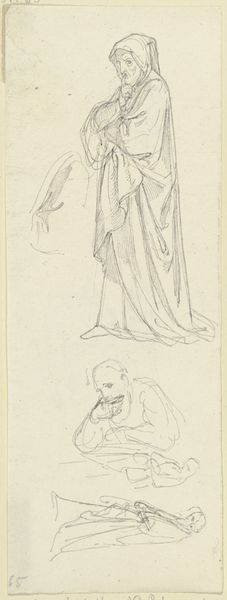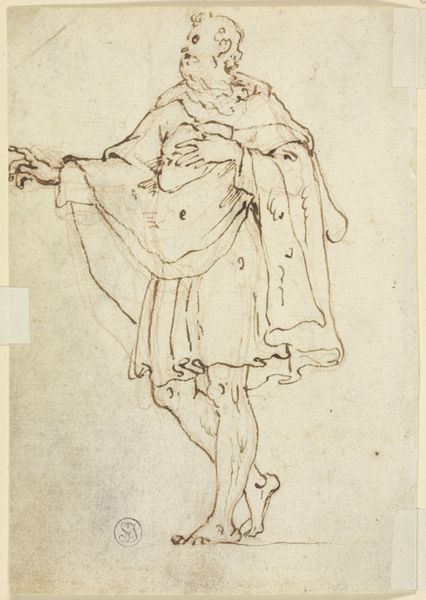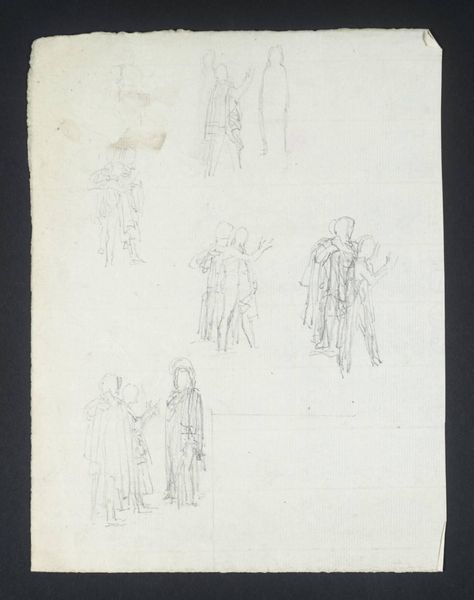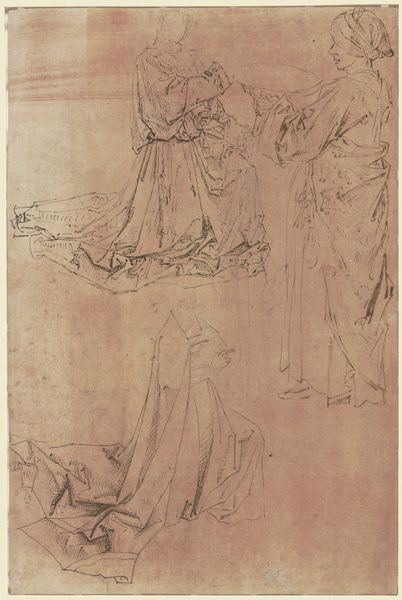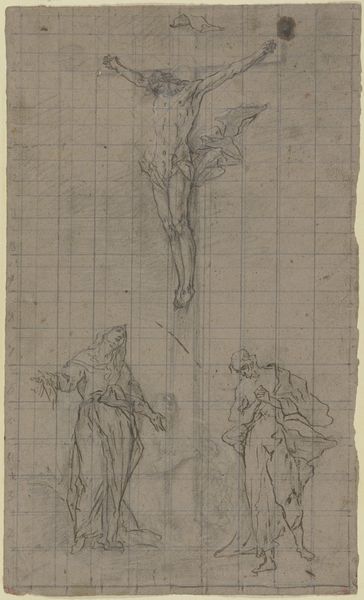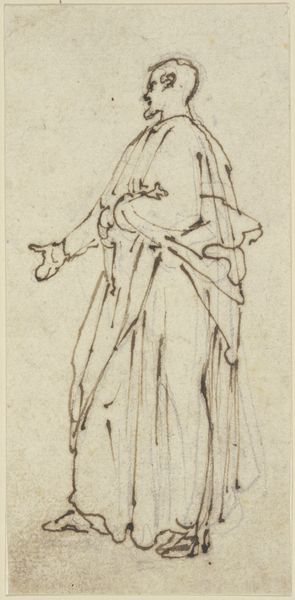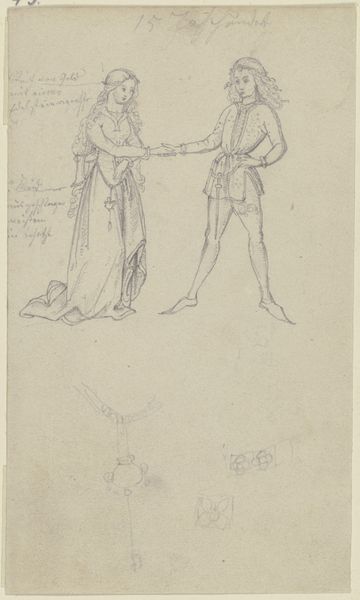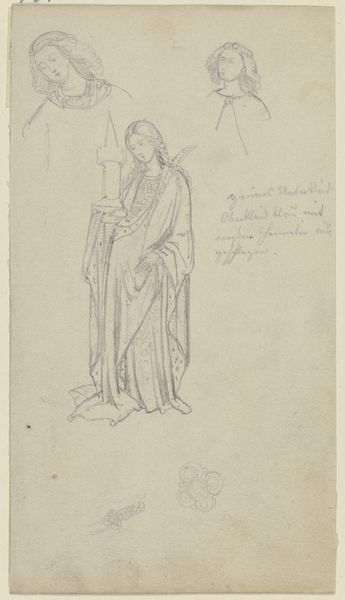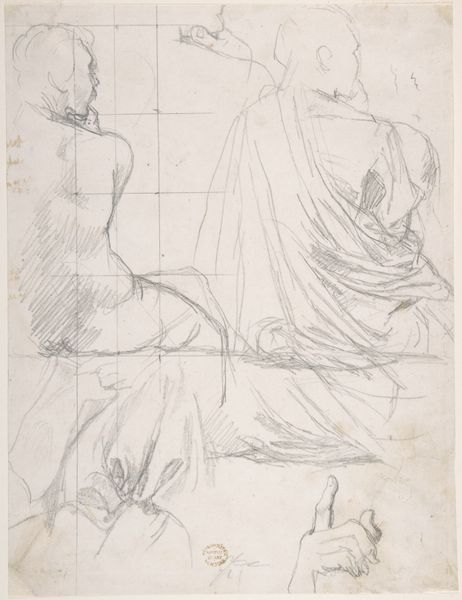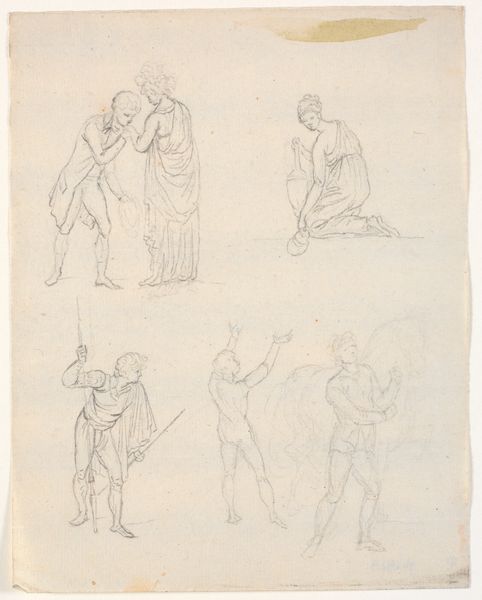
drawing, paper, pencil
#
portrait
#
drawing
#
figuration
#
paper
#
11_renaissance
#
pencil
Copyright: Public Domain
Editor: This is "Studienblatt: Stifterfiguren", a Renaissance pencil drawing on paper, currently at the Städel Museum. I find it really interesting how lightly the figures are rendered; you can even see the artist’s process with the visible erasures and corrections. What draws your eye when you look at this sheet? Curator: What's most striking is the directness of the pencil on paper, a very immediate material process. The Renaissance is often viewed through the lens of grand narratives, but here we see the nuts and bolts of artistic production, a sheet presumably for the artist's own use, not a commission. Editor: So it's like, behind the scenes? Curator: Exactly! Think about where the paper came from. The labor involved in making the pencils. What statement is this choice of "humble" materials making in contrast to traditional artwork using expensive materials during the Renaissance? It moves beyond the finished piece and speaks more about the circumstances of its creation. The marks that seem like ‘mistakes’ actually provide us with insights into artistic labour, a sort of unplanned collaboration between artist and medium. Editor: That’s a good point, it makes me wonder about the role of drawings in that era...were they always steps on the way to a "finished" painting, or could they be valuable in their own right? Curator: That distinction between ‘preparatory’ and ‘finished’ is something a materialist approach challenges. Can the process of making *be* the artwork itself, a record of actions? Are the social connotations that come with "humble" materials challenging or upholding traditions? Editor: So by focusing on materials and production, we start to see past just the figures represented, and think more about what making this drawing meant. Curator: Precisely! And it opens up avenues to question hierarchical thinking between art and craft, concept and execution, maker and artwork. Editor: That's such a cool way to approach art; it's less about "what is it," and more about "how did it get here and why"? Thank you for broadening my understanding of that artwork!
Comments
No comments
Be the first to comment and join the conversation on the ultimate creative platform.
